Exercise plays a crucial role in promoting longevity and good health. Many people wonder if staying active can really help them live longer. Regular physical activity can increase life expectancy and improve overall health outcomes.

Research shows that engaging in moderate exercise for 150 to 300 minutes per week or vigorous exercise for 75 to 150 minutes per week can lower the risk of death. Some studies even suggest that short bursts of intense activity can have significant health benefits.
While exercise is important, it’s not the only factor in living a long, healthy life. Other lifestyle habits also contribute to longevity. A balanced approach that includes regular physical activity, a healthy diet, and other positive behaviors can help people maintain good health as they age.
Key Takeaways
- Regular exercise can increase life expectancy and improve overall health.
- Both moderate and vigorous physical activities offer longevity benefits.
- A balanced lifestyle that includes exercise and other healthy habits is key to living longer.
The Role of Exercise in Longevity
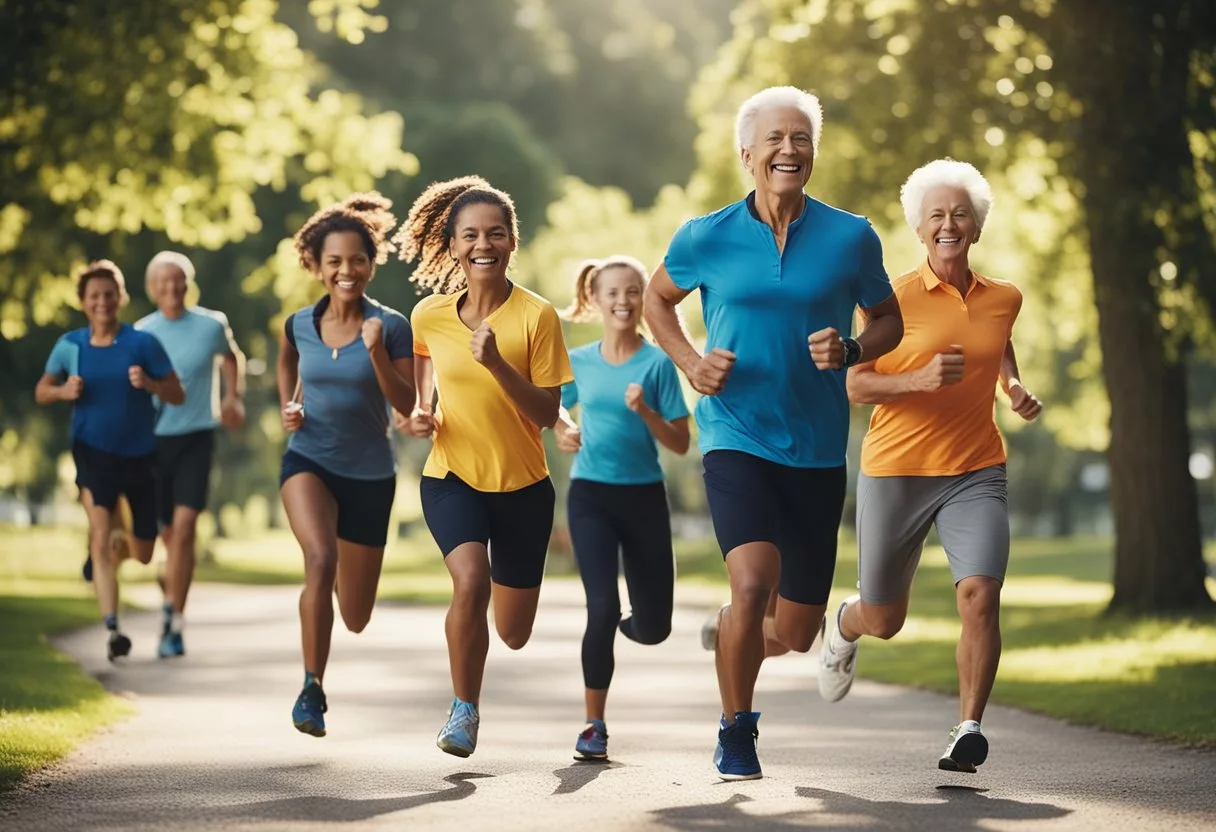
Exercise plays a crucial part in extending lifespan and improving health. Studies show that regular physical activity can slow biological aging and lower mortality risk.
Understanding the Science of Exercise and Longevity
Exercise affects longevity at the cellular level. It reduces the risk of chronic diseases like heart disease and cancer that can shorten lifespan.
Physical activity also boosts the body’s ability to repair DNA damage. This slows down the aging process in cells.
Regular exercise increases the length of telomeres. Telomeres are protective caps on chromosomes that shorten as we age. Longer telomeres are linked to a longer life.
Moderate exercise 150 minutes per week can add years to life. More intense workouts may provide even greater benefits.
Comparative Studies on Physical Activity and Life Expectancy
Large studies have looked at how exercise impacts lifespan. One study of over 122,000 people[1] found that higher fitness levels were linked to living longer at any age.
Another major study showed that doing more than the recommended amount of exercise can further lower death risk. The benefits were seen with both moderate and vigorous activity.
Even small amounts of exercise can help. Just 2 minutes of vigorous activity daily may cut the risk of dying from cancer or heart problems.
Inactive people who start exercising see big gains in life expectancy. The increase can be several years in some cases.
Types of Exercise and Their Effects on Health
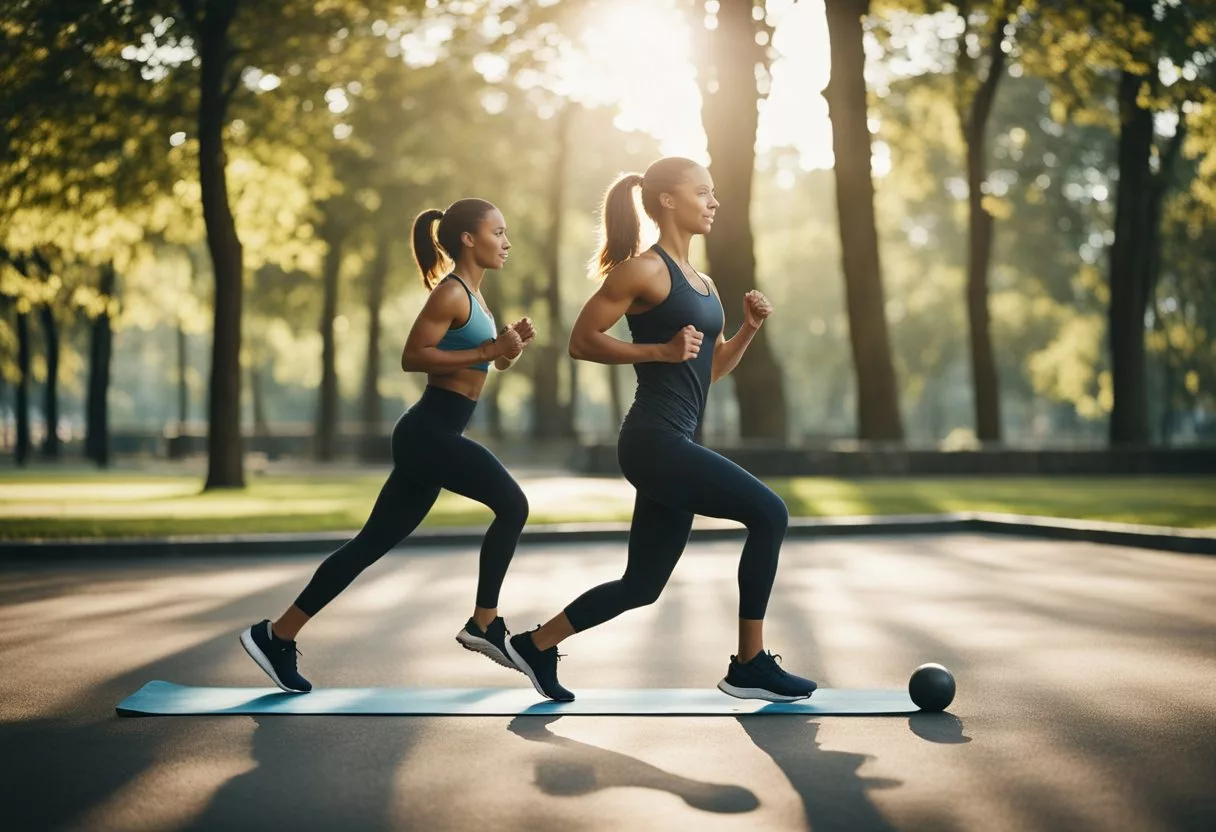
Exercise comes in different forms, each offering unique benefits for health and longevity. The intensity and type of physical activity can influence how it impacts the body and overall lifespan.
Vigorous Exercise and Its Impact on Life Span
Vigorous exercise, like running or swimming, can have a significant effect on life expectancy. Even short bursts of intense activity may reduce the risk of death from cancer or heart problems. This type of exercise typically raises the heart rate and breathing significantly.
Benefits of vigorous exercise include:
- Improved cardiovascular health
- Increased metabolism
- Enhanced muscle strength
Studies suggest that just 2 minutes of vigorous exercise daily could have meaningful health impacts. However, it’s important to build up to this intensity gradually to avoid injury.
Moderate Exercise: A Balanced Approach to Fitness
Moderate physical activity, such as brisk walking or weightlifting, is recommended for adults. This level of exercise raises the heart rate and breathing, but not as much as vigorous activity.
Health benefits of moderate exercise:
- Reduced risk of chronic diseases
- Better weight control
- Improved mood and mental health
The current guidelines suggest 150 to 300 minutes of moderate exercise per week. This amount has been linked to lower mortality rates and better overall health outcomes.
The Benefits of Mild Physical Activities like Walking
Mild physical activities, especially walking, can play a crucial role in maintaining health and extending lifespan. These activities are gentle on the body and can be easily incorporated into daily routines.
Walking offers several health benefits:
- Improved circulation
- Better joint health
- Reduced stress levels
For older adults or those with health limitations, walking can be an excellent form of exercise. It’s low-impact and requires no special equipment. Regular walks can help maintain mobility and independence as people age.
Even light exercise can contribute to better cognitive function and reduced memory loss. This makes mild activities valuable for overall health and longevity.
Health Benefits of Regular Physical Activity

Exercise offers many health benefits. It can improve heart health, help with weight control, and boost mental wellbeing. Regular physical activity also lowers the risk of chronic diseases.
Cardiovascular Fitness and Heart Health
Regular exercise strengthens the heart and improves circulation[2]. This leads to better cardiovascular fitness. A stronger heart pumps blood more efficiently, reducing strain on the body.
Exercise also helps lower bad cholesterol and raise good cholesterol. This can reduce the risk of heart disease and stroke. Even moderate activity like brisk walking can make a big difference.
For adults, experts recommend at least 150 minutes of moderate exercise per week. This can include activities like:
- Brisk walking
- Swimming
- Cycling
- Dancing
Weight Management and Obesity Prevention
Physical activity plays a key role in weight control. It burns calories and builds muscle, which boosts metabolism. Regular exercise helps maintain a healthy weight and prevent obesity.
Moderate exercise combined with a balanced diet is effective for weight loss. Even small amounts of daily activity can help. Taking the stairs instead of the elevator or parking farther away adds up over time.
Exercise also helps reduce belly fat. This type of fat is linked to many health issues. By staying active, people can lower their risk of obesity-related diseases.
Exercise and Its Effects on Blood Pressure and Diabetes
Regular physical activity can help control blood pressure. It makes the heart stronger, so it can pump more blood with less effort. This puts less force on the arteries, lowering blood pressure.
For people with diabetes, exercise is crucial. It helps the body use insulin better, which controls blood sugar. Physical activity can lower the risk of type 2 diabetes[3] and help manage existing diabetes.
Exercise tips for blood pressure and diabetes control:
- Aim for 30 minutes of moderate activity most days
- Include both cardio and strength training
- Stay hydrated during workouts
- Check blood sugar before, during, and after exercise if diabetic
Mental Health and Stress Reduction
Physical activity has powerful effects on mental health. It triggers the release of endorphins, which are natural mood boosters. Regular exercise can help reduce symptoms of depression and anxiety.
Exercise also serves as a natural stress reliever. It can improve sleep quality, which further helps manage stress. Activities like yoga or tai chi combine physical movement with mindfulness for added benefits.
Even short bursts of activity can improve mood. A quick walk or a few minutes of stretching can provide a mental boost. Making exercise a habit can lead to long-term improvements in mental wellbeing.
Demographic Considerations in Exercise
Exercise habits vary across different age groups and demographics. People’s fitness needs and abilities change throughout their lives.
Exercise in the Elderly: Benefits for Older Adults
Older adults can gain major health benefits[4] from regular physical activity. Even light exercise helps maintain mobility and independence. Walking, swimming, and strength training are great options for seniors.
Staying active lowers the risk of falls and injuries. It also boosts mental health and cognitive function. Older adults should aim for 150 minutes of moderate exercise per week.
Group classes can make fitness more fun and social for seniors. Chair exercises work well for those with limited mobility. The key is to start slow and build up gradually.
The Importance of Exercise for Adults Across Different Age Groups
Adults of all ages need regular exercise for optimal health. Young adults who stay fit[5] lower their risk of chronic diseases later in life. Middle-aged adults can maintain strength and flexibility through exercise.
Exercise needs vary by age:
- 20s-30s: Focus on building habits and fitness base
- 40s-50s: Maintain muscle mass and bone density
- 60s+: Emphasize balance and functional fitness
Income and education levels impact exercise habits. Higher income groups tend to be more active. Community programs can help make fitness accessible to all.
Small lifestyle changes add up. Taking stairs or short walks boosts daily activity. The goal is to make movement a regular part of life at any age.
Scientific Insights into Exercise and Cellular Health

Exercise affects our bodies at the cellular level. It impacts key genetic structures and reduces inflammation. These changes help slow down aging and promote longevity.
Telomeres and Exercise: The Genetic Perspective
Telomeres are protective caps at the ends of chromosomes. They shorten as cells divide and age. Exercise can help maintain telomere length[6], slowing cellular aging.
Studies show that regular physical activity is linked to longer telomeres. This effect is seen in various age groups and fitness levels.
Moderate exercise seems most beneficial for telomere health. Too much intense exercise may actually shorten telomeres.
The type of exercise matters too. Both aerobic activities and strength training can positively impact telomere length.
Exercise and Reduced Inflammation: Slowing Down the Aging Process
Chronic inflammation speeds up aging. It damages cells and tissues over time. Exercise helps reduce this harmful inflammation[7].
Regular physical activity lowers levels of inflammatory markers in the blood. This includes substances like C-reactive protein and interleukin-6.
Exercise also boosts anti-inflammatory compounds. These help protect cells from damage.
The anti-inflammatory effects of exercise are seen quickly. Even a single workout can reduce inflammation markers.
Long-term exercise habits lead to more lasting reductions in inflammation. This helps slow the aging process at a cellular level.
Navigating Exercise Recommendations
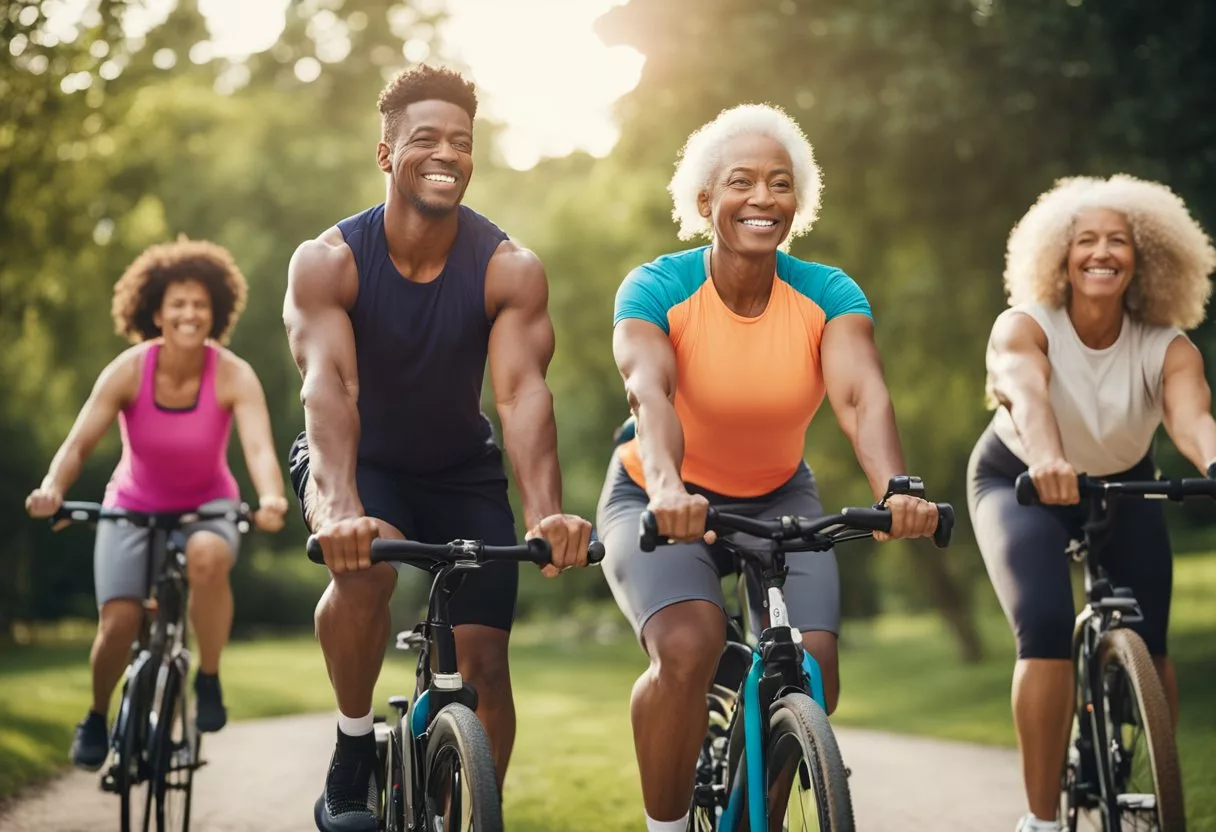
Getting the right amount of exercise can be tricky. Different sources give different advice. Let’s look at what experts and studies say about how much physical activity we need.
Professional Healthcare Advice on Physical Activity
Doctors and healthcare providers play a key role in guiding patients on exercise. They often suggest starting small and building up over time. Many recommend at least 150 minutes of moderate exercise each week.
A doctor might advise walking, swimming, or biking. They can help patients find safe ways to be active based on their health. Healthcare providers also stress the importance of staying active as we age.
For some people, a doctor may suggest more intense workouts. Others might need to take it easier. The key is to talk to a healthcare provider for personalized advice.
National Guidelines and Studies by JAMA Internal Medicine
The United States has official exercise guidelines. These come from health experts and are based on research. JAMA Internal Medicine[4] has published studies on exercise and longevity.
One big study found that doing more than the recommended amount of exercise can lower death risk. The current guidelines suggest:
- 150-300 minutes of moderate exercise per week
- 75-150 minutes of vigorous exercise per week
- Or a mix of both
Some research shows that even small amounts of exercise can help. A study found that just 2 minutes of vigorous exercise daily might reduce cancer and heart-related death risks[8].
Incorporating Exercise into a Healthy Lifestyle
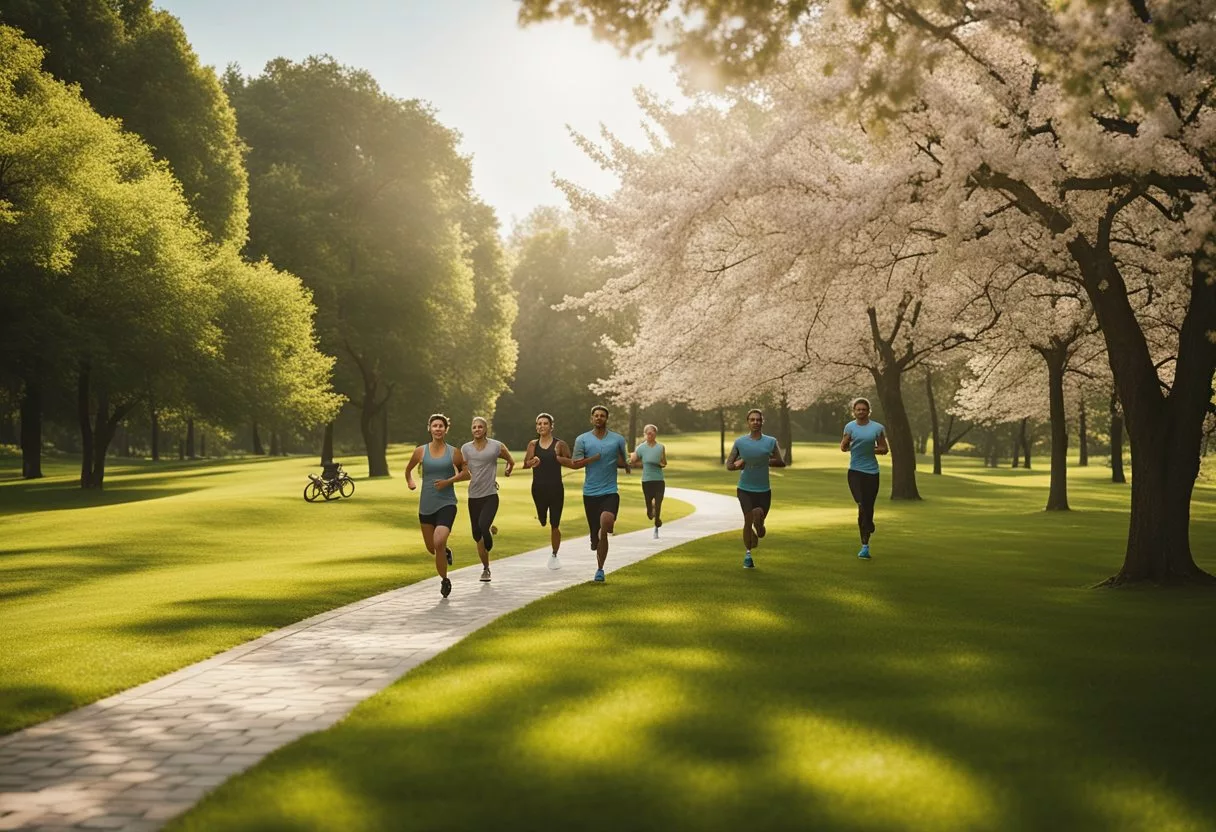
Exercise plays a key role in living longer, but it works best when combined with other healthy habits. A well-rounded approach to wellness can boost longevity and enhance quality of life.
The Synergy Between Diet, Exercise, and Other Lifestyle Factors
A balanced diet fuels effective workouts and aids recovery. Eating plenty of fruits, vegetables, and lean proteins gives the body energy for exercise. Proper hydration is also crucial.
Regular physical activity helps the body use nutrients more efficiently. This can lead to better weight control and reduced risk of chronic diseases.
Sleep is another important factor. Good sleep habits help the body recover from exercise and maintain overall health. Aim for 7-9 hours of quality sleep each night.
Stress management techniques like meditation or yoga can complement an exercise routine. These practices may lower cortisol levels and improve mental well-being.
Building Sustainable Habits for a Longer, Healthier Life
Consistency is key when it comes to exercise and longevity. Start small and gradually increase activity levels. This approach helps prevent burnout and injury.
Choose activities you enjoy. This makes it easier to stick with an exercise routine long-term. Try different types of exercise to find what works best for you.
Set realistic goals and track progress. This can help maintain motivation over time. Celebrate small victories along the way.
Make exercise a social activity. Working out with friends or joining group classes can boost accountability and enjoyment.
Schedule workouts like any other important appointment. This helps make exercise a regular part of your routine.
Avoidance of Risk Behaviors like Smoking for Longevity Boost
Quitting smoking is one of the most impactful steps for improving health and longevity. Smoking damages nearly every organ in the body and increases risk of many diseases.
Vigorous exercise can help reduce cravings and manage withdrawal symptoms when quitting smoking. It also helps repair some of the damage caused by smoking.
Avoid excessive alcohol consumption. While moderate drinking may have some health benefits, heavy drinking can negate the positive effects of exercise.
Limit exposure to environmental toxins. This includes air pollution, harmful chemicals, and excessive sun exposure. These factors can accelerate aging and increase disease risk.
Regular health check-ups and screenings are important. Early detection of health issues allows for timely intervention and better outcomes.
Conclusion
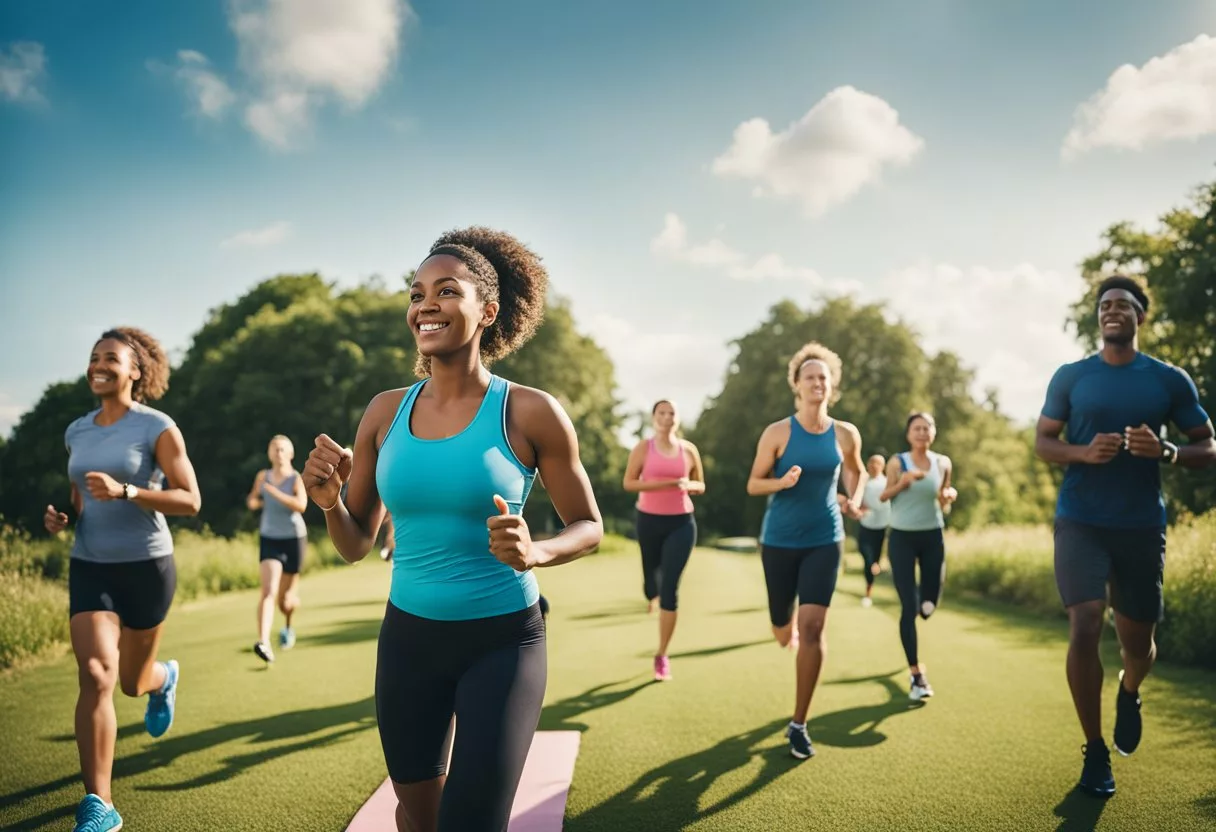
Exercise plays a vital role in extending lifespan. Regular physical activity lowers the risk of death from various causes. It helps prevent chronic diseases and reduces premature death rates.
Moderate exercise like walking or weightlifting offers significant benefits. Vigorous movement provides even greater advantages. Combining different types and intensities of exercise is ideal.
The recommended amount is 150-300 minutes of moderate or 75-150 minutes of vigorous exercise per week. Doing more than this can further decrease mortality risk.
Exercise boosts longevity through several mechanisms:
- Reduces inflammation
- Improves mood and sleep
- Enhances cognitive function
- Strengthens the immune system
- Supports digestive health
Even small amounts of exercise can make a difference. Just 2 minutes of vigorous daily activity may lower cancer and heart disease risks.
Regular physical activity is a key factor in living a longer, healthier life. It’s never too late to start reaping the benefits of exercise for increased longevity.
Frequently Asked Questions

Exercise plays a crucial role in extending lifespan and improving health. Regular physical activity offers numerous benefits that contribute to longevity, from strengthening the heart to reducing disease risks.
How does regular physical activity influence overall lifespan?
Regular exercise can lower the risk of death and extend life expectancy. It helps maintain a healthy weight, reduces stress, and improves cardiovascular health.
Physical activity also boosts the immune system and enhances mental well-being. These factors combined contribute to a longer, healthier life.
What type of exercise is most beneficial for increasing longevity?
A mix of moderate and vigorous exercise provides optimal benefits for longevity. Moderate activities like walking[4] and weightlifting are effective.
Vigorous exercises such as running or swimming also offer significant health advantages. The key is to find activities that one enjoys and can maintain consistently.
Can excessive exercise have a negative impact on lifespan?
While exercise is generally beneficial, excessive amounts may potentially harm health. Overtraining can lead to injuries, weaken the immune system, and cause burnout.
It’s important to balance exercise with proper rest and recovery. Listening to one’s body and avoiding extreme regimens helps maximize the benefits of physical activity.
What is the correlation between exercise frequency and life expectancy?
Studies show a positive correlation between regular exercise and increased life expectancy. Federal guidelines recommend 150 to 300 minutes of moderate exercise per week[4].
Exercising more than the recommended amount may further lower the risk of death. Consistency in physical activity is key to reaping long-term health benefits.
How do the health benefits of exercise contribute to a longer life?
Exercise improves cardiovascular health, reducing the risk of heart disease and stroke. It helps maintain healthy blood pressure and cholesterol levels.
Physical activity also strengthens bones and muscles, enhances balance, and boosts metabolism. These factors collectively contribute to a longer, more active life.
What scientific evidence supports the link between exercise and longevity?
Numerous studies have demonstrated the connection between exercise and increased lifespan. Research shows that regular physical activity can slow aging at a cellular level.
Large-scale studies have found that people who exercise regularly have a lower risk of premature death. The evidence consistently supports the role of physical activity in promoting longevity.
References
- Can exercise extend your life?. https://www.health.harvard.edu/blog/can-exercise-extend-your-life-2019031316207 Accessed October 26, 2025
- Exercise: 7 benefits of regular physical activity. https://www.mayoclinic.org/healthy-lifestyle/fitness/in-depth/exercise/art-20048389 Accessed October 26, 2025
- Benefits of Physical Activity | Physical Activity Basics. https://www.cdc.gov/physical-activity-basics/benefits/index.html Accessed October 26, 2025
- Massive study uncovers how much exercise is needed to live longer. https://www.ama-assn.org/delivering-care/public-health/massive-study-uncovers-how-much-exercise-needed-live-longer Accessed October 26, 2025
- Physical activity in older age: perspectives for healthy ageing and frailty. https://www.ncbi.nlm.nih.gov/pmc/articles/PMC4889622/ Accessed October 26, 2025
- Effects of exercise on cellular and tissue aging. https://www.ncbi.nlm.nih.gov/pmc/articles/PMC8202894/ Accessed October 26, 2025
- Scientists work out the effects of exercise at the cellular level. https://www.sciencedaily.com/releases/2024/05/240501125227.htm Accessed October 26, 2025
- Exercise and longevity: How to stay active for a long, healthy life. https://www.medicalnewstoday.com/articles/in-conversation-why-exercise-is-key-to-living-a-long-and-healthy-life Accessed October 26, 2025
